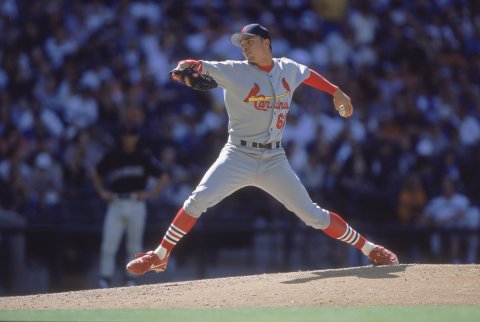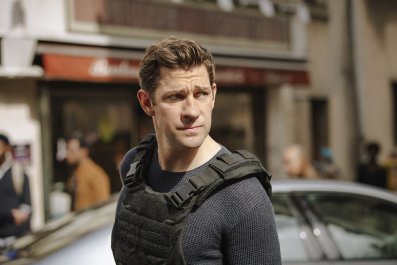
It's a confounding thing, identity shaking. Like a thief in the night, the yips creep in—and you, a world-class athlete, are suddenly robbed of something so simple, a task you've done mindlessly for decades.
In June 2017, the Philadelphia 76ers selected Markelle Fultz, the No. 1 overall pick in the NBA draft. Fultz was, by nearly all accounts, a can't-miss prospect who'd inject scoring into an already promising Philly lineup.
By January 2018, Fultz's jump shot was hopelessly broken—the form so bad it'd look out of place on a playground court, let alone an NBA floor.
In months that would follow, there'd be numerous (and conflicting) reports of shoulder injuries and training gone awry. Months later, NBA trainer Drew Hanlen would finally pin his client's issues on the yips—a frightening diagnosis but one most observers had long suspected.
The yips, simply put, occur when an athlete cannot perform a simple sports task—sometimes to nearly unbelievable levels—triple clutches with a ball in hand, fastballs ricocheting 7 feet above the batter. It can be a slog to overcome.
It's difficult to pinpoint what exactly is going on. Some experts believe there's a neurological condition at play in some cases and psychological issues in others, while other experts cite the yips as fallout from injuries and trauma. What's clear is that the anxiety, the fear of the yip, can keep the thing alive, making it a problem of perpetual motion, always feeding itself.
Fultz's free throw shooting troubles continue... pic.twitter.com/kb6QjPUihz
— Bleacher Report (@BleacherReport) October 22, 2017
Fultz, unfortunately, is in a position where he needs to resolve the hitch, or multiple hitches, in his shot—and fast. Fair or not, the expectations for a No. 1 overall pick are high, and the work he and Hanlen are doing could play a large part in defining his career.
Playing guard in the NBA without a serviceable jumper is a difficult, if not impossible, task. It effectively slices down the space on the court available to your team—the defense can ignore Fultz if he's relatively far from the hoop—and it hamstrings Fultz, severely limiting what he can do if he's not a few feet from the basket. Add the fact that his troubles followed him to the free throw line and Fultz's issues are pretty severe.
After sitting out most of the year, he returned just before the playoffs. You could see his remarkable talent, and his shot looked better than the worst practice videos—but was he still benched for most of the key games.
If sports history is any indicator, overcoming the yips is not simple. Mackey Sasser couldn't throw from home plate to the mound. It took Rick Ankiel years to stop sailing pitches. Chuck Knoblauch couldn't toss a ball a few feet from second to first base. Chuck Hayes's free throws were a long-running herky-jerky dance.
The yips are a slog to fix, if you can fix them at all. Where do you even start? In many cases, it means altering the way you've done something your entire life.
"You'll need to change something," sports psychologist Debbie Crews, who has studied the yips for two decades, told Newsweek. "Most of the athletes say they want to do it like [they've] always done it.… They don't want to hear [they need to change]."
For a long time, according to the Mayo Clinic, the yips were considered a type of performance anxiety—which is a pretty vague catchall—but now, some chalk up certain cases to a neurological condition called focal dystonia, which causes involuntary muscle contractions. Studies performed by Crews have shown that athletes who struggle under pressure have increased activity in sections of the brain that are responsible for analytical thinking, while parts of the brain responsible for coordination have less activity.
Crews, who has worked quite a bit with golfers in particular, said the key is to use a handful of strategies to effectively reset the brain, to not start the process of the yip, then simply let it be. Fear of the yip begets anxiety, which begets the yip, which begets fear, which begets anxiety…
With someone like Fultz, she'd recommend things like shifting where the jump shot starts, or how his feet are set, or putting his focus on a result past the hitch in his shot (like where his hand ends) to trick the brain past the yip. Find a few strategies to build confidence, then let it be and don't over-practice.
"It's not about fixing it," she told Newsweek. "It's about outsmarting it, staying one step ahead of it. Staying in charge so the yip is not controlling their game."
Hanlen—who declined to comment to Newsweek, as did the 76ers when asked if the team or Fultz was available—suggested there was a rebuild of sorts underway this summer with Fultz's shot. He noted on the Talking Schmidt Podcast:
"With Markelle, obviously he has one of the most documented cases of the kind of the yips of basketball in recent years, where he completely forgot how to shoot and had multiple hitches in his shot. So for me it was, Hey listen, how can I get this kid that was No. 1 in last year's draft back rolling and get him to the point where he was before, if not better?
We've been working hard every day, working on rewiring his body and getting a kind of smooth stroke back into his shot. We're way ahead of pace where I thought we were going to be. I thought it was going to take me at least six weeks before we had kind of a serviceable jump shot, and we're already starting to shoot with a jump in week two.
It's not perfect yet, but I think by the end of the summer it will be perfect, he'll be back rolling, and he'll show people why he was the No. 1 pick."
While the progress Hanlen and Fultz have shared—the odd video here and there—has seemed promising, perfection is a lofty goal. It never really happened for Sasser, a New York Mets catcher in the early '90s who famously became unable to throw the ball back to the pitcher without multiple false starts and a hefty loft on the toss.
"Once you get past a certain level, there's no coming back from it, in my opinion," Sasser told Newsweek. "It becomes a habit."
On this date in 1987, Mackey Sasser made his MLB debut. "Fields of Fear" looks at his struggle w/ the 'yips': http://t.co/AodoEwC2Ig
— 30 for 30 (@30for30) July 17, 2015
Sasser's career was cut short. He still thinks about it—the what-ifs. Years later, after a lot of work with experts, he can toss a ball back to the pitcher just fine. What would he tell someone like Fultz who is struggling with the yips? Let go of expectations.
"Excuse my language, you just gotta say, 'F**k it,'" Sasser said. "The kid's a shooter. I don't know how to tell him to fix it. All of us are made up different. I let it overwhelm me."
Sasser worked with a few experts, including sports therapist David Grand and mental training coach Rob Polishook. For Sasser, the yips came on slowly, then overtook him when he hurt his ankles in a collision. Not being able to rock back and forth in his crouched position while catching sparked the yips. Grand and Polishook—in separate conversations with Newsweek—described fixing Sasser the person to eventually fix the yip, a strategy they use with their respective clients to this day.
Grand said the yip is often akin to the hot stove reflex—where your hand withdraws from heat—in an effort to attempt to avoid trauma, such as an injury. "The athlete is going to come out of [trauma] with a fear of recurrence…in the deeper parts of the brain, the unconscious parts of the brain," he said.
Polishook talked a lot about working on the athlete as a person, to bring them out of a state of being overwhelmed. Before you fix that for Fultz, it's kind of all for naught, he added.
"I would bet that it's a result of on- and off-field issues and traumas that have just accumulated," Polishook said. "It's not about the shooting, he knows how to shoot.… I've seen the clips. The body is frozen."

There's perhaps no more famous case of the yips than Ankiel, a St. Louis Cardinals pitcher with the talent to become the best in the league, who started sailing pitches high and low, almost comically far from the catcher's mitt. Going through the yips, feeling the panic that accompanies something that seems so simple, is frightening, Ankiel told Newsweek.
"I could actually hear the blood start to drain from my head," he said. "Throwing the baseball, it felt like my wrist wouldn't work. I couldn't feel the ball."
Soon enough, Ankiel was relegated to the bottom of the minor leagues. Years of all-consuming anxiety followed. He began to feel like a different person.
"You can't leave it on the field [or] on the court," he said. He had to give up pitching. Remarkably, he reinvented himself as an outfielder and made it back to the majors, enjoying a nice career.
Ankiel wrote a book detailing his life and battle with the yips—how he couldn't escape the thought of collapsing in front of all those people—and now consults those going through similar problems. He would tell Fultz to not let ego get in the way, as many athletes do, and to talk about what's going on. It can take days, weeks, months, years to fix—if it can be beaten at all. But Fultz has an entire career ahead of him. It can be done.
"I wish there was a magic pill, or a magic saying, that would make it better in an instant, but there isn't," Ankiel said. "It's a process."
















